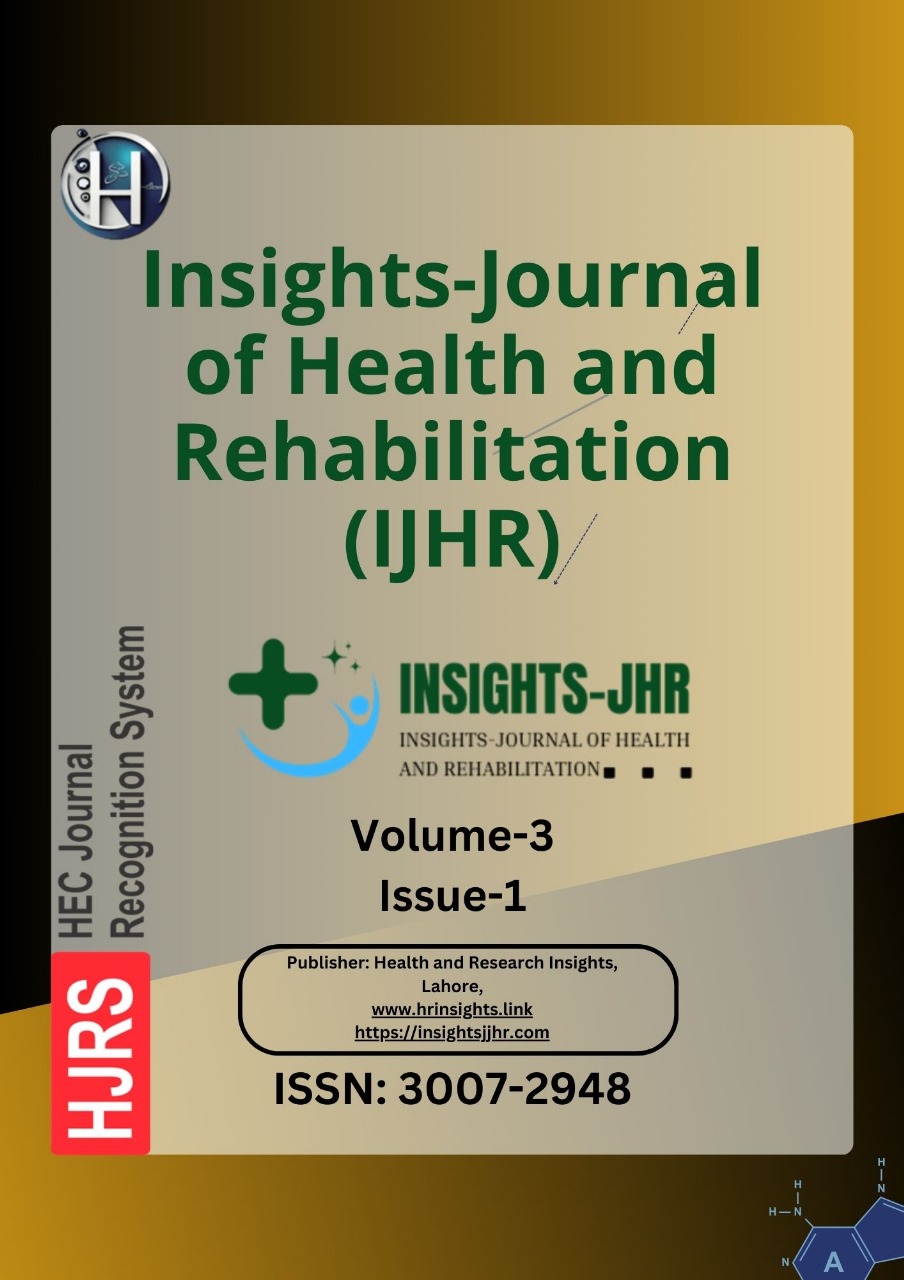THE EFFECTS OF SHOCK WAVE THERAPY ALONG WITH MAITLAND MOBILIZATION VERSUS MAITLAND MOBILIZATION ALONE TO RESTORE MOBILITY IN PATIENTS WITH CHRONIC ANKLE SPRAIN
DOI:
https://doi.org/10.71000/k4xx4k59Keywords:
Ankle sprains, chronic pain, joint instability, Maitland mobilization, mobility restoration, range of motion, Shock Wave TherapyAbstract
Background: Chronic ankle sprain is a common musculoskeletal injury characterized by persistent pain, restricted movement, and functional instability, significantly affecting the quality of life. Effective rehabilitation is crucial to restore mobility, alleviate symptoms, and improve functional outcomes. Shock Wave Therapy and Maitland Mobilization have been individually recognized for their therapeutic benefits in musculoskeletal rehabilitation, but their combined efficacy in addressing chronic ankle sprain remains underexplored.
Objective: To evaluate the additional effects of Shock Wave Therapy combined with Maitland Mobilization versus Maitland Mobilization alone on mobility restoration in patients with chronic ankle sprain.
Methods: A randomized clinical trial was conducted with 30 participants recruited from Al-Fatah Club, Samanabad Tiger Club, Allied Hospital, and Madina Teaching Hospital. Participants were randomly divided into two groups of 15 each. Group A received Shock Wave Therapy combined with Maitland Mobilization and a warm-up session, while Group B received conventional therapy involving Maitland Mobilization alone. Key outcomes included the Karlsson scoring scale for ankle functionality and ankle range of motion (ROM) assessments for plantarflexion, dorsiflexion, eversion, and inversion. Pre- and post-treatment data were collected over 18 sessions, conducted three times weekly for six weeks. Statistical analysis was performed using SPSS version 20.
Results: Both groups demonstrated significant improvements in Karlsson scores and ROM (p<0.05). Group A showed a higher mean difference in Karlsson scores (-19.733 ± 6.041) compared to Group B (-14.067 ± 4.114). Group A also exhibited greater improvements in plantarflexion ROM (-21.800 ± 9.930 vs. -19.133 ± 10.141), dorsiflexion ROM (-9.400 ± 2.947 vs. -8.000 ± 3.251), eversion ROM (-10.067 ± 5.077 vs. -7.667 ± 2.664), and inversion ROM (-15.667 ± 3.994 vs. -14.533 ± 7.745).
Conclusion: The study concluded that combining Shock Wave Therapy with Maitland Mobilization leads to faster recovery, superior functional improvements, and enhanced ankle mobility compared to Maitland Mobilization alone, underscoring the value of multimodal rehabilitation strategies for chronic ankle sprains.
Downloads
Published
Issue
Section
License
Copyright (c) 2025 Aqsa Aslam, Maryam Safdar, Fazeelat Ramzan, Ghulam Dastgeer, Hifza Riaz, Qurat Ul Ain, Shahzaib Ali (Author)

This work is licensed under a Creative Commons Attribution-NonCommercial-NoDerivatives 4.0 International License.







